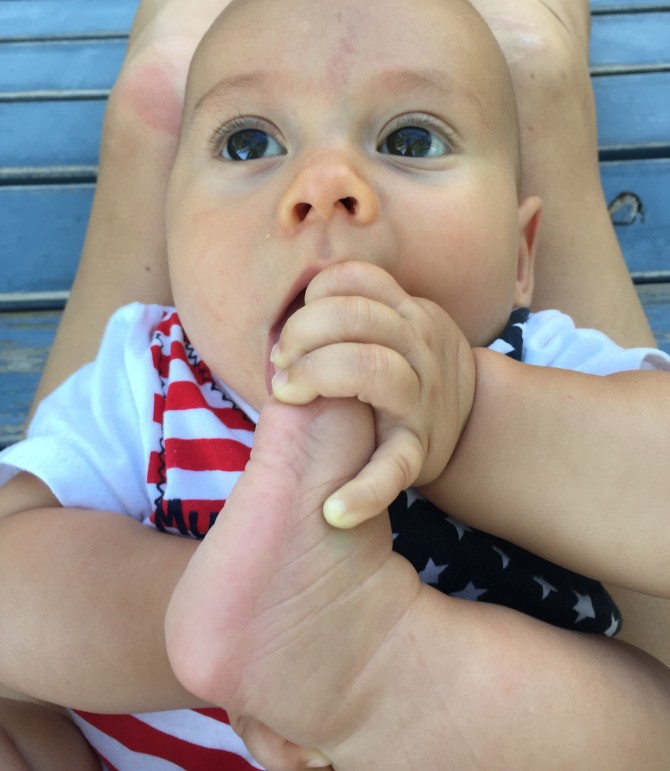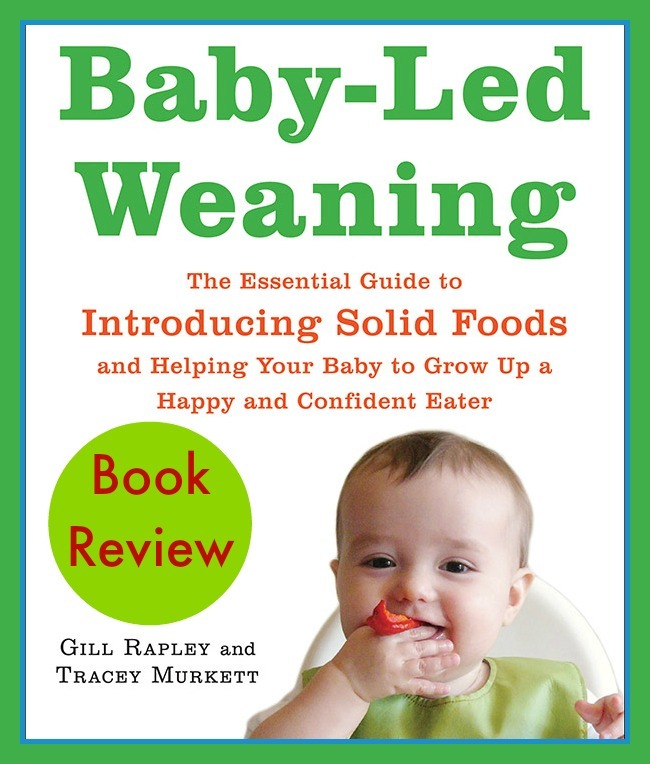The longer that I am a parent (admittedly not that long. . .), the more aware I become of the infinite decisions involved in raising a child. At every corner of this parenting journey, Luke and I have found ourselves with choices to make: Breast milk or formula? Cloth diapers or disposable? Sleep-training or attachment parenting? Some of these decisions were easy, others have been agonizing, and few have resulted in clear-cut resolutions.
As Charlie nears the six-month mark we are staring down our next big decision: how will we approach the introduction of solid food? For many parents the answer to this question is as straightforward as deciding which brand of rice cereal to buy, but as I began researching this topic I decided I would like to take an alternative route with Charlie: after reading several articles and attending a course taught by a Registered Dietitian, we’ve decided to follow the Baby-Led Weaning method of moving Charlie from breastmilk to solid food. My preliminary research left me with a fairly good understanding of how to implement this approach, but for a more comprehensive tutorial on the subject, I turned to Baby-Led Weaning: The Essential Guide to Introducing Solid Foods and Helping Your Baby to Grow Up a Happy and Confident Eater.
The practice of Baby-Led Weaning has likely existed for centuries, but the theory and rationale behind the approach were developed by the book’s coauthor, Gill Rapley. In her twenty years as a nurse, midwife, and lactation counselor, Rapley encountered numerous families who struggled with feeding their babies. As the authors write in their Appendix, the solution was simple: “to wait a bit longer (if the baby was under six months), or to let the baby have a go himself (if he was older), seemed to make a huge difference, both to the babies’ behavior and to the parents’ stress levels. It all boiled down to giving control back to the baby.”
Rapley’s method involves the total abandonment of spoon-feeding and purées in favor of allowing babies to participate in family meals, eating the same food as their parents and feeding themselves without assistance. Rapley points out that babies achieve other developmental milestones (crawling, walking, talking, etc.) on their own, in their own time, and that learning to eat should be no different. Given the opportunity to explore food, babies will naturally learn how to feed themselves.
Baby-Led Weaning: The Essential Guide. . . begins with an explanation of the BLW method, in which the authors make a strong case for why this approach works. They then instruct parents on implementing the method with their own babies, beginning with guidelines on recognizing signs of readiness (“If she can sit up with little or no support, reach out to grab things and take them to her mouth quickly and accurately, and if she is gnawing on her toys and making chewing movements, then the chances are she is ready to start exploring solid foods.”). This introduction is followed by chapters on how to get started, how to integrate BLW into family life, and how to progress as baby gets older.
The book includes helpful tips on safety (a big concern with this type of feeding strategy) and managing the inevitable messes of BLW (another potential downside to this method). The authors also give suggestions for specific foods to try, along with general nutrition guidelines for the whole family (since babies are participating in family meals, it’s important that the whole family is eating wholesome foods). The book concludes with an entire chapter devoted to troubleshooting, where the authors answer such questions as “How do I know how much food my baby is actually eating?” (Answer: if they are still breastfeeding, the amount doesn’t matter. . . their calories and nutritional needs are still being met through breast milk.) and “How can I avoid so much food waste?” (My favorite answer: “if you have a dog you may even be able to cut back on dog food; dogs quickly learn to patrol the area around a baby who is self-feeding!” <– Yet another reason why we need to get our Charlie Brown his own little Snoopy!). Interspersed throughout the book are anecdotes from families who have successfully implemented BLW.
If you are planning on following the Baby-Led Weaning method of introducing solids to your baby, I would highly recommend reading this informative guide. However, I do have a few reservations about the book. My first critique is a small one: while I found the book’s real-life BLW stories interesting, there were entirely too many of them; in fact, the whole book felt a bit bloated and could have been edited down to about half its length.
My biggest concern with The Essential Guide is that it presents BLW as the ONLY correct approach to introducing solids. With very few exceptions, I do not believe that there is ONE right approach to ANY aspect of parenting, and I see it as a bit of a red flag when a new method is presented to the exclusion of all others. Even after all my reading, I am not completely convinced that BLW will be the best feeding approach for our family. I know enough to be intrigued, and because the method makes a lot of sense to me, I’m willing to give it a try; I’m definitely excited to start having Charlie join us at mealtimes and explore food according to the BLW guidelines. However, I’m not opposed to resorting to purées if that is what Charlie seems to need. (To be fair, the authors do acknowledge that some babies would prefer to be spoon-fed, but this approach is definitely presented as an inferior one.)
Despite the book’s drawbacks, I do not regret reading it, particularly because I don’t personally know many other moms who have taken this approach to feeding and will appreciate the step-by-step tutorial as we navigate this next new parenting adventure.
My Book Rating: 4 out of 5 stars.

Side Note: If you are interested in this method of feeding but would rather not invest time and money into reading the whole book, check out this tutorial from the author’s website. It’s a quick and easy read and includes all the basics you need to know to get started.


[…] Baby-Led Weaning, by Gill Rapley and Tracey Murkett: Of all the challenges we faced in our first year as parents, it was the introduction of solid foods that frightened me the most. I attended classes and read several articles on the subject, but it wasn’t until reading this book that I was able to develop the skills and confidence I needed to start solids with our guy. We didn’t totally adhere to all of the authors’ recommendations, but their book served as a helpful tool in getting us started, and I couldn’t be more pleased with how well Charlie responded to the process. (Original Review) […]
[…] first foray into feeding Charlie solids revealed something I’ve suspected: baby led weaning is going to be VERY messy! I see a whole lot of high chair-cleaning and baby-bathing in my […]